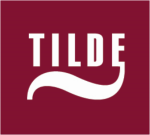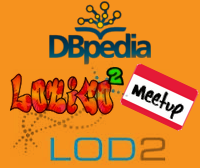
Session, THU 10:30 - 12:00
Semantic Tools & Data Integration
A Comparison of NER Tools w;r;t; Domain-Specific Vocabularies
In this paper we compare several state-of-the-art Linked Data Knowledge Extraction tools, with regard to their ability to recognise entities of a controlled, domain-specific vocabulary. This includes tools that offer APIs as a Service, locally installed platforms as well as an UIMA-based approach as reference.
We evaluate under realistic conditions, with natural language source texts from keywording experts of the Städel Museum Frankfurt.
The goal is to find first hints which tool approach or strategy is more convincing in case of a domain specific tagging/annotation, towards a working solution that is demanded by GLAMs world-wide.
Timm Heuss, Bernhard Humm, Christian Henniger and Thomas Rippl
University of Plymouth, UK / University of Applied Sciences Darmstadt, Germany
Linked Music Data from Global Music Charts
Accessing data on the Web in order to obtain useful information has been a challenge in the past decade. The technologies of the Semantic Web have enabled the creation of the Linked Data Cloud, as a concrete materialization of the idea to transform the Web from a web of documents into a web of data. The Linked Data concept has introduced new ways of publishing, interlinking and using data from various distributed data sources, over the existing Web infrastructure. On the other hand, music represents a big part of the everyday life for many people in the world, and therefore, understandably, the Web contains loads of data from the music domain.
Given the fact that Linked Data enables new, advanced use-case scenarios, the music domain and its users can also benefit from this new data concept. Besides being provided with additional information about their favorite artists and songs, the users can also potentially get an overview of the dynamics of the world music playlists and charts, from the aspects of artists, countries, genres, etc.
In this paper, we describe the process of transforming one- and two-star music playlists and charts data from various global radio stations, into five-star Linked Data, in order to demonstrate these benefits. We also present the design of our Playlist Ontology necessary for our data model. We then demonstrate – via SPARQL queries and a web application – some of the new use-case scenarios for the users over the published linked dataset, which are otherwise not available over the isolated datasets on the Web.
Milos Jovanovik, Matej Petrov, Bojan Najdenov and Dimitar Trajanov
Faculty of Computer Science and Engineering, Skopje, Republic of Macedonia
Language Meets Knowledge in Digital Content Management
The two worlds – language and knowledge – with their mature linguistic and semantic technologies have reached the level, on which they are ready to address challenges of digital content management. Digital content is created every day, and its growth is tremendous. A huge share of digital content is created by businesses. A business needs a strong strategy in its digital content management. This is of paramount importance throughout all the lifecycle steps for digital content – from its creation to publication. In the 21st century, an innovative interdisciplinary approach is needed.
We will present several case studies within our expertise demonstrating innovative approaches to terminology and translation technologies and their impact on digital content management. We call
for collaboration experts in semantic technologies to explore ideas of how businesses can benefit from our interdisciplinary collaboration and how terminology and translation technologies can help
semantic technologies and in return. Terminology, as a linguistic technology, is at the heart of digital content management. It can help semantic technologies to disambiguate a linguistic unit in a
definite context. Thus, supporting clear and consistent digital content management. Translation, as a linguistic technology, can help semantic technologies to represent a piece of knowledge in
different languages, thus, supporting multilingual and cross-language digital content management.
Tatiana Gornostay
Tatiana Gornostay is an experienced manager, trainer, and researcher in both human and automated translation and terminology management for about 10 years. She works as a business development manager in terminology services, leads the terminology group at Tilde, and manages the cloud services for terminology work. She is a frequent speaker at international business and academia events and a member of several professional organisations, for example, she participates in the W3C community and best practices groups on Linked Data for Language Technologies.
Poster: Matching Web Entities with Potential Actions
The creation of schema.org as the de facto vocabulary for the implementation of Semantic Annotations was the dawn of a new era for the Web by motivating the Web developers to start weaving semantics in the content, mainly, for visibility reasons in search engine results. Moving further, the new version of the vocabulary enables Web entities to self-describe the Actions with which they interact with users, agents or services. In this scope, we present our ongoing work on automatic weaving of Actions based on the existing semantic annotations of a website.
Ioannis Stavra-kantonakis, Anna Fensel and Dieter Fensel.
Semantic Technology Institute (STI) Innsbruck, University of Innsbruck




